Publications
-

Screening Divinity
SummaryExamines screen portrayals of the gods of classical mythology and biblical deities
- Investigates a single issue over a range of genres in cinema and television from fantasy movies to biopics to Bible stories
- Considers the gods of Greek and Roman mythology alongside the biblical God of the Judeo-Christian tradition
- Draws on recent trends in scholarship in both classical reception and film and theology to provide an interdisciplinary study and synthesis between two rarely connected fields
- Examines the portrayal of deity on screen in films such as Le Tonnerre de Jupiter (1903), The Ten Commandments (1956) and Troy, Fall of a City (2018)
Lisa Maurice examines screen portrayals of gods – covering Greco-Roman mythology, the Judeo-Christian God and Jesus – from the beginning of cinema to the present day. Focussing on the golden age of the Hollywood epic in the fifties and the twenty-first century second wave of big screen productions, she provides an over-arching picture that allows historical trends and developments to be demonstrated and contrasted.
Engaging with recent scholarship on film, particularly film and theology as well as classical reception, she considers the presentation of these gods through examination of their physical and moral characteristics, as well as their interaction with the human world, against the background of the social contexts of each production.
-
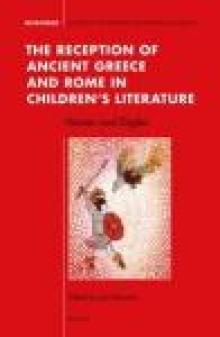
The Reception of Ancient Greece and Rome in Children’s Literature Heroes and Eagles
SummaryGreece and Rome have long featured in books for children and teens, whether through the genres of historical fiction, fantasy, mystery stories or mythological compendiums. These depictions and adaptations of the Ancient World have varied at different times, however, in accordance with changes in societies and cultures. This book investigates the varying receptions and ideological manipulations of the classical world in children’s literature. Its subtitle, Heroes and Eagles, reflects the two most common ways in which this reception appears, namely in the forms of the portrayal of the Greek heroic world of classical mythology on the one hand, and of the Roman imperial presence on the other. Both of these are ideologically loaded approaches intended to educate the young reader.
-
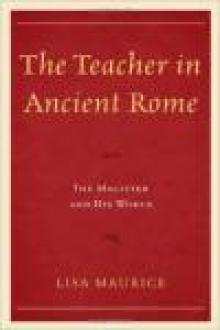
The Teacher in Ancient Rome: The Magister and His World
SummaryThis book investigates a particular aspect of education in ancient Rome, namely the figure of the teacher. After identifying and defining the different kinds of teachers in the Roman education systems, Maurice illuminates their ways of life both as both professionals and members of society. This text surveys the physical environment in which teachers worked, as well as the methods, equipment, and techniques used in the classroom. Slavery, patronage, and the social and financial status of the various types of teachers are considered in depth. Maurice examines ideological issues surrounding teachers, discussing the idealized figure of the teacher and the frequent differences between this ideal and actual educators. Also explored are the challenges posed by the interaction of Greek and Roman culture—and later between paganism and Christianity—and how these social clashes affected those responsible for educating the youth of society. The Teacher in Ancient Rome is a comprehensive treatment of a figure instantly recognizable yet strikingly different from that of the modern teacher.
-
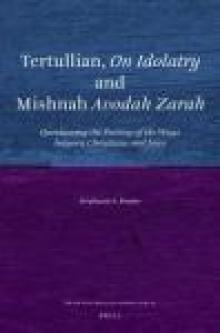
Tertullian, On Idolatry and Mishnah Avodah Zarah
SummaryThis work studies and compares systematically the text of Tertullian, an African Church Father of the third century CE, on idolatry with the rabbinic Mishnah Avodah Zarah, on the same subject, dating roughly from the same period. Similarities and differences between the Jewish and Christian approaches to idolatry are examined and accounted for. The research is inscribed in the wider framework of discussions on the “parting of the ways” between Jews and Christians. It also addresses related questions such as the role of the rabbis in second and third century Judaism in the Land of Israel and in the Diaspora; relations between Jews living in those places; interactions between Jews and pagans, Christians and pagans, Jews and Christians...
-
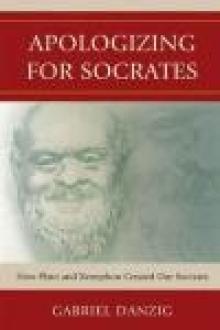
Apologizing for Socrates
SummaryApologizing for Socrates examines some of Plato's and Xenophon's Socratic writings, specifically those that address well-known controversiese concerning the life and death of Socrates. Gabriel Danzig argues that the effort to defend Socrates from a variety of contemporary charges helps explain some of the central philosophical arguments and literary features that appear in these works. Concentrating on the two Apologies, Crito, Euthyphro, Xenophon's Symposium and Memorabilia, Lysis, and Oeconommicus, Danzig argues that the apologetic efforts were essential for rebuilding the community of Socratic friends and companions, which was devastated by the trial and death of Socrates. The Socratic writings are not merely literary or philosophical endeavors, but also political acts of great competence.
-
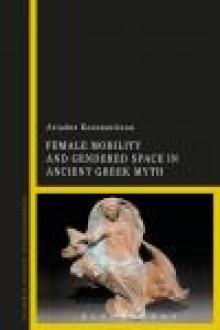
Female Mobility and Gendered Space in Ancient Greek Myth
SummaryWomen's mobility is central to understanding cultural constructions of gender. Regarding ancient cultures, including ancient Greece, a re-evaluation of women's mobility within the household and beyond it is currently taking place. This invites an informed analysis of female mobility in Greek myth, under the premise that myth may open a venue to social ideology and the imaginary.
Female Mobility and Gendered Space in Ancient Greek Myth offers the first comprehensive analysis of this topic. It presents close readings of ancient texts, engaging with feminist thought and the 'mobility turn'. A variety of Olympian goddesses and mortal heroines are explored, and the analysis of their myths follows specific chronological considerations. Female mobility is presented in quite diverse ways in myth, reflecting cultural flexibility in imagining mobile goddesses and heroines. At the same time, the out-of-doors spaces that mortal heroines inhabit seem to lack a public or civic quality, with the heroines being contained behind 'glass walls'. In this respect, myth seems to reproduce the cultural limitations of ancient Greek social ideology on mobility, inviting us to reflect not only on the limits of mythic imagination but also on the timelessness of Greek myth. -
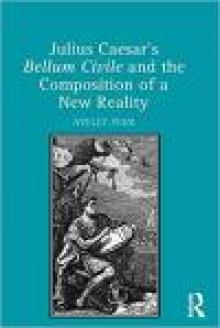
Julius Caesar's Bellum Civile and the Composition of a New Reality
SummaryIn his Commentarii de Bello Civili Julius Caesar sought to re-invent his image and appear before his present and future readers in a way which he could control and at times manipulate. Offering a new interpretation of the Bellum Civile this book reveals the intricate literary world that Caesar creates using sophisticated techniques such as a studied choice of vocabulary, rearrangement of events, use of indirect speech, and more. Each of the three books of the work is examined independently to set out the gradual transformation of Caesar's literary persona, in step with his ascent in the 'real' world. By analysing the work from Caesar's viewpoint the author argues that by adroit presentation and manipulation of historical circumstances Caesar creates in his narrative a different reality, one in which his conduct is justified. The question of the res publica is also a key point of the volume, as it is in the Bellum Civile, and the author argues that Caesar purposely does not present himself as a Republican, contrary to commonly held views. Employing detailed philological analyses of Caesar's three books on the Civil War, this work significantly advances our understanding of Caesar as author and politician.
-
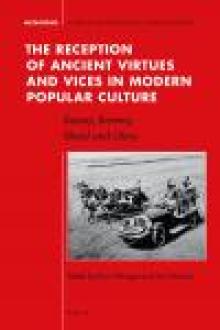
The Reception of Ancient Virtues and Vices in Modern Popular Culture
SummaryIn Ancient Virtues and Vices in Modern Popular Culture, Eran Almagor and Lisa Maurice offer a comprehensive collection of chapters dealing with the reception of antiquity in popular media of the modern era (19th-21st centuries). These media include theatrical plays, cinematic representations, Television drama, popular newspapers or journals, poems and outdoor festivals. For the first time in Classical Reception Studies, ancient Jewish literature and imagery are included in the discussion. The focus of the volume is both the continuity and variance between ancient and modern sets of values, which appear in the new interpretations of the ancient stories, figures and protagonists.
-
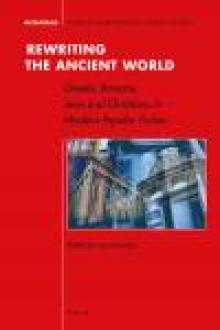
Rewriting the Ancient World
SummaryRewriting the Ancient World looks at how and why the ancient world, including not only the Greeks and Romans, but also Jews and Christians, has been rewritten in popular fictions of the modern world. The fascination that ancient society holds for later periods in the Western world is as noticeable in popular fiction as it is in other media, for there is a vast body of work either set in, or interacting with, classical models, themes and societies. These works of popular fiction encompass a very wide range of society, and the examination of the interaction between these books and the world of classics provides a fascinating study of both popular culture and example of classical reception
-

The Invention of Coinage and the Monetization of Ancient Greece
SummaryCoinage appeared at a moment when it fulfilled an essential need in Greek society and brought with it rationalization and social leveling in some respects, while simultaneously producing new illusions, paradoxes, and new elites. In a book that will encourage scholarly discussion for some time, David M. Schaps addresses a range of important coinage topics, among them money, exchange, and economic organization in the Near East and in Greece before the introduction of coinage; the invention of coinage and the reasons for its adoption; and the developing use of money to make more money.



